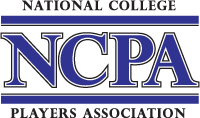A PRISM contribution; written by Jason Roberts
The National College Players Association (NCPA) late last week released the results of a study it conducted recently which suggests that there continues to grow, as FoxBusiness.com writes, an “estimated shortfall between college athletes’ full scholarships and the actual cost of attendance at each Division I university.”

In revealing such a shortfall, the NCPA maintains that universities at the Division I level have, for the most part, acted to deceive recruits into “being responsible for paying thousands of dollars” despite awarding such students what is more commonly referred to as a “full” athletic scholarships to attend college.
United Steelworkers International President, Leo W. Gerard, agrees, commenting on the subject, “The fact is, coaches fill high school recruits’ heads with promises of free rides and full scholarships, when in fact no such things exist. The NCAA designs full scholarships to fall short of the advertised price tag of a school, leaving recruits scrambling to make ends meet.” Gerard maintains these supposed full scholarship offers are made despite the fact that the NCAA actually prohibits any university from providing athletic scholarships that equal the cost of attendance.
“It’s deceptive to call it a ‘full’ athletics scholarship,” states NCPA President Ramogi Huma, especially “when it doesn’t fully pay for a university’s estimated price tag.” He continues: “These same universities offer ‘full’ academic scholarships that do cover the price tag of a school. This appears to be a deliberate attempt at misleading young high school student-athletes, their parents, and current college athletes.”
Working with Ellen J. Staurowsky, professor of sport management and graduate chair of the department at Ithaca College in New York, the NCPA aimed in its study to identify specifically the estimated scholarship shortfall at every Division I university that offers athletic scholarships. The reasons for doing so, says Stuarowsky, are obvious, particularly considering, as she states, “The mythology that college athletes receive a free education in exchange for their athletic labor is a powerful one, fueled in part, by a public perception that athletes have an easy path to being admitted into college and a privileged path through school once in.”
In compiling the data gathered through research done by Saturowsky and the NCPA, it was revealed that scholarship limitations as policed by the NCAA can leave a student-athlete awarded a full scholarship with additional educational expenses ranging from as low as $200 a year to upwards of $6000 per year or more. The average amount required to pay out of pocket, as identified by the study, came out to $2,763 a year, or more than $13,800 over the course of five years.
As a service to student-athletes either involved in the process of recruitment or already in college, as well as for parents of such individuals, the NCPA has made available a valuable tool which draws on the study and can calculate the total estimated scholarship shortfalls for 336 of the nation’s Division I universities. Readers can click here in order to access this particular resource.
That the prevalence of such prominent athletic scholarship shortfalls be made more apparent remains of little doubt to Huma and the NCPA. In concluding his discussion of the relevancy of his organization’s study, the NCPA president tells FoxBusiness.com, “Every college athlete, recruit and parent should go to the NCPA web site and look closely at these shortfall numbers.” “Otherwise,” Huma warns, “they will find that their ‘full’ scholarship is leaving them buried in unexpected expenses,” this despite, both he and the NCPA strongly maintain, there are more than enough funds available from the more than $4 billion a year generated by student-athletes participating in NCAA-sponsored sports to avoid such shortfalls and prevent confusion on the part of the student-athlete and associated parents.
Leave a comment